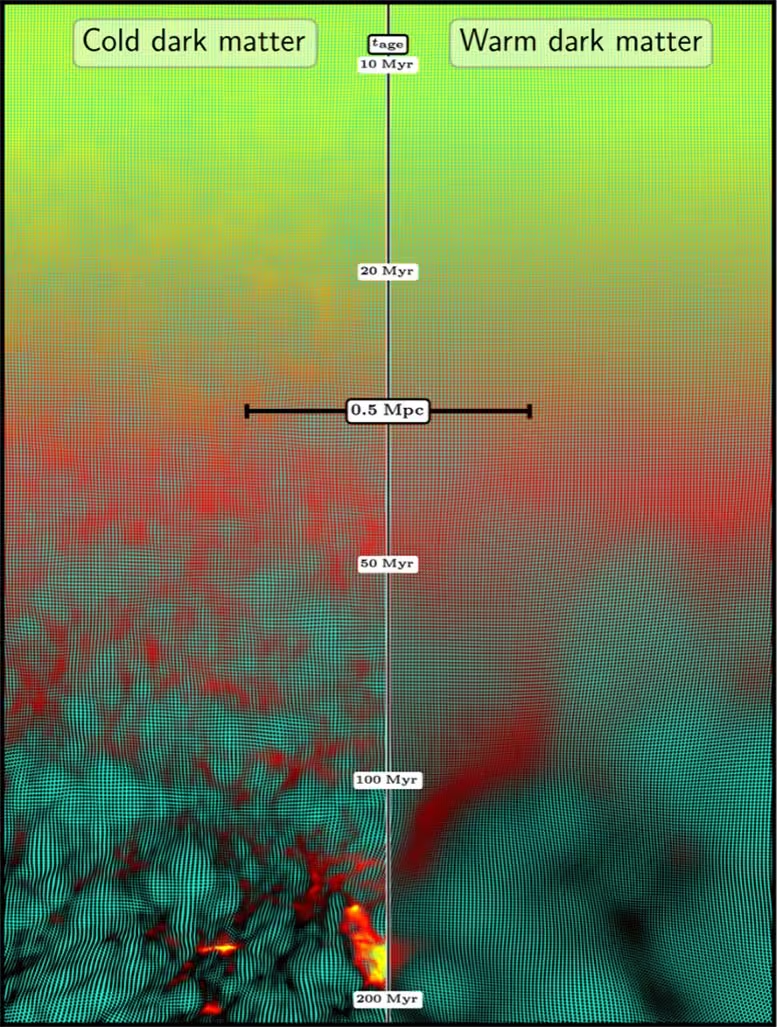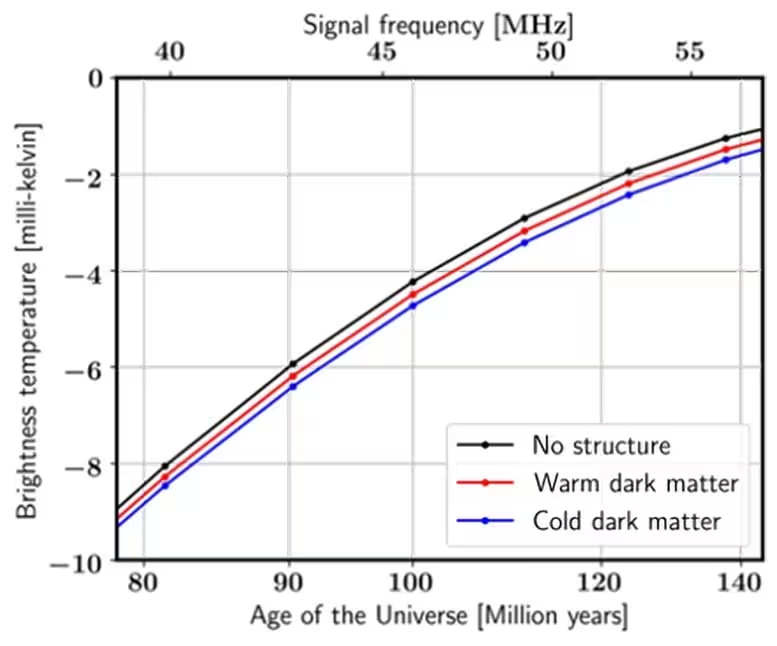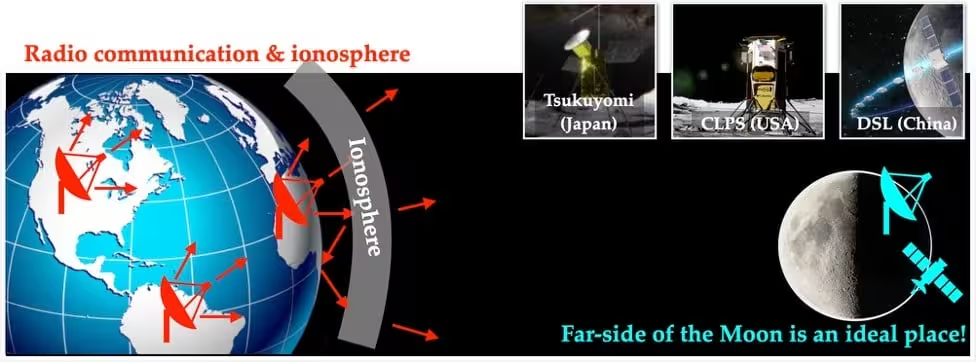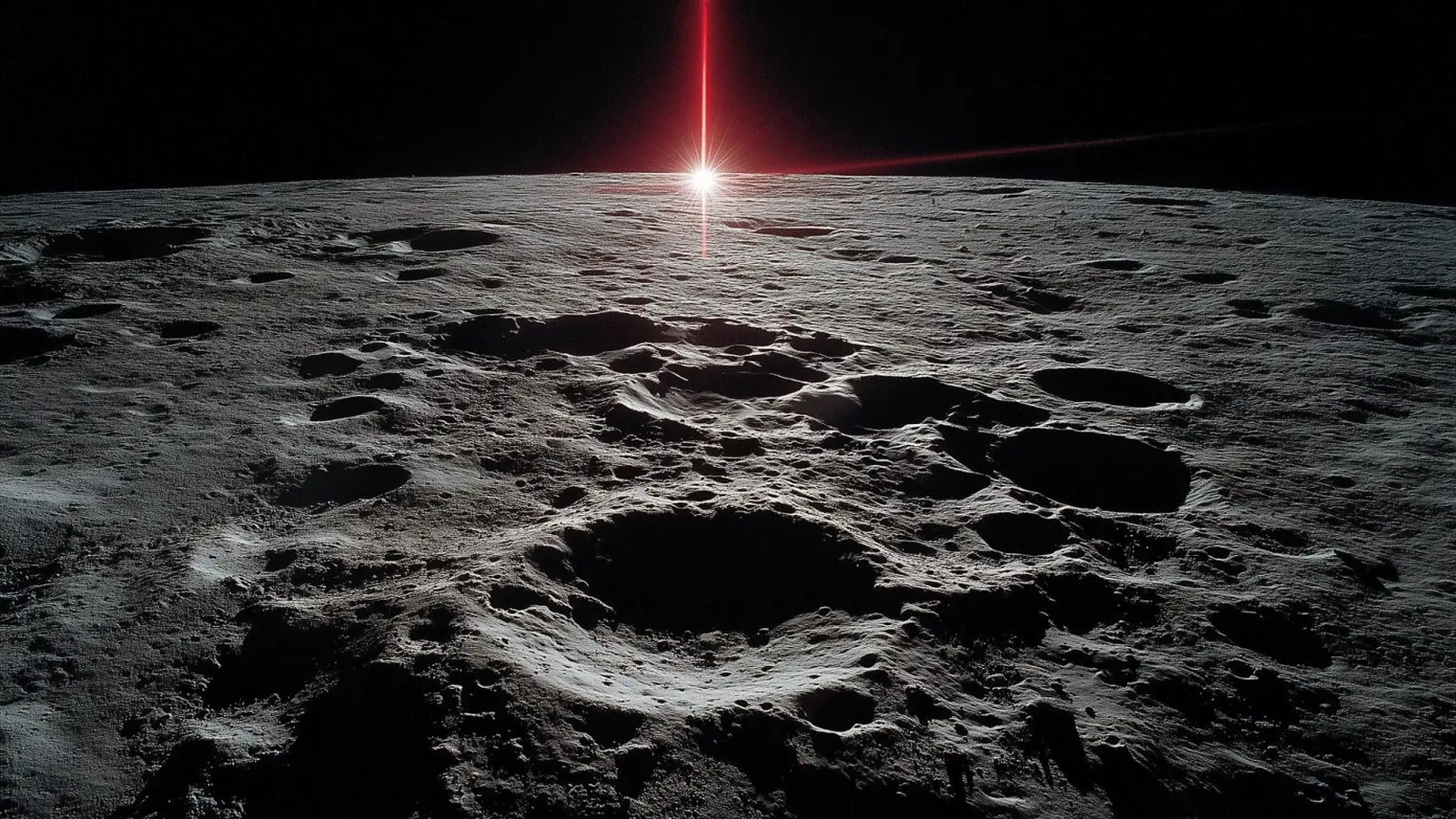9 Minutes
Listening to the Universe’s Dark Ages
By listening for ghostly radio echoes from the early Universe, scientists believe future Moon missions could determine what dark matter really is. These faint signals from the cosmic Dark Ages might soon solve one of physics’ greatest mysteries.
The earliest epoch after recombination—often called the cosmic Dark Ages—precedes the first stars and galaxies. During this time, neutral hydrogen filled the Universe and produced a faint radio signature at the 21-centimeter wavelength. An international team of researchers has simulated how tiny density and temperature variations in that primordial hydrogen imprint a subtle 21-cm radio signal that depends sensitively on the properties of dark matter. Their results, published in Nature Astronomy on September 16, 2025, suggest that radio observatories placed on the far side of the Moon could detect differences between competing dark matter models.
Scientific background: dark matter and the 21-cm probe
Ordinary, baryonic matter—the atoms that make up stars, planets, and living things—accounts for only about 20 percent of the Universe’s matter content. The remaining ~80 percent is dark matter: a non-luminous component inferred from its gravitational influence on galaxies, clusters, and the expansion of large-scale structure. Dark matter neither emits nor scatters light in known ways, so determining its particle mass and interaction properties remains one of modern cosmology’s central goals.
One crucial classification distinguishes cold dark matter (CDM) from warm dark matter (WDM). Cold dark matter particles are relatively heavy and slow-moving, allowing small-scale structures such as dwarf galaxies and early gas clumps to form. Warm dark matter particles are lighter and more mobile; their free-streaming suppresses small-scale structure formation, smoothing out the distribution of matter on sub-galactic scales.
The redshifted 21-cm line of neutral hydrogen provides a unique observational window onto the Dark Ages and cosmic dawn. When hydrogen atoms transition between hyperfine energy levels, they emit or absorb radiation at a rest wavelength of 21 cm (about 1420 MHz). Because the Universe has expanded since that era, the radiation is now expected near tens of MHz (roughly 50 MHz or below) for signals originating ~100 million years after the Big Bang. The amplitude and spectral shape of the global (sky-averaged) 21-cm signal encode the density, temperature, and velocity distribution of neutral hydrogen—and indirectly, the underlying dark matter distribution.
Simulations and key results
To isolate the dark matter signature, the research team led by Hyunbae Park (then at the Kavli Institute for the Physics and Mathematics of the Universe) simulated the cosmic Dark Ages with unprecedented small-scale resolution. Instead of modeling later, more complex epochs dominated by star formation and feedback, they focused on an earlier, simpler interval when physics is better constrained and the imprint of dark matter is clearer.
The simulations tracked how gas parcels clumped under gravity in both cold and warm dark matter scenarios. As gas fell into dark matter potential wells, it compressed and heated; denser regions cooled differently from underdense regions. Those contrasts alter the strength and frequency modulation of the 21-cm emission and absorption.

Figure 1. In this visualization, each dot represents a gas parcel with a mass approximately 1,000 times that of the Sun in the simulation of the cosmic Dark Ages. The left and right panels compare the cold and warm dark matter scenarios, respectively. The color represents the gas temperature, with yellow, red, and black corresponding roughly to 200 , 50 , and 20 Kelvin, respectively. Time progresses from top to bottom, showing the evolution of gas structures during the cosmic Dark Ages. Credit: Hyunbae Park
The team computed sky-averaged 21-cm brightness-temperature curves and found measurable differences between WDM and CDM models. In the cold dark matter case, the early formation of small-scale structures produces a slightly higher contrast in the 21-cm signal; in the warm case, suppressed small-scale structure produces a smoother, subtly altered spectral shape. The predicted difference in brightness temperature between these scenarios is small—less than a milli-kelvin—but systematic and theoretically robust.

Figure 2. Expected sky-averaged hydrogen 21-cm signal from around 100 million years after the Big Bang. The black line represents the case without the structure formation shown in Figure 1. The blue and red lines correspond to scenarios where structures formed from cold and warm dark matter, respectively, as illustrated in Figure 1. Credit: Park et al.
Because the effect depends on small-scale structure growth, detecting it would directly constrain the dark matter particle mass and thus the classification as warm or cold. This offers a complementary approach to laboratory searches and indirect detection experiments.
Why the Moon’s far side is the ideal observatory
Observing the Dark Ages 21-cm signal from Earth is extraordinarily difficult. The relevant frequency band (≈50 MHz and below) is dominated by terrestrial radio-frequency interference (RFI) from broadcasting and communications systems and is strongly affected by the ionosphere, which distorts and absorbs low-frequency radio waves. The resulting contamination makes ground-based detection of the faint global Dark Ages signal effectively impossible.
The far side of the Moon, permanently shielded from Earth’s radio transmissions, provides a radio-quiet environment ideally suited to low-frequency cosmology. Lunar surface or orbiting instruments on the Moon’s far side can observe the pristine low-frequency sky without terrestrial RFI or ionospheric effects.

Figure 3. Schematic illustration showing the motivation for space-based radio observations from the far side of the Moon. Earth-based observations are hindered by radio interference and the ionosphere. The far side of the Moon offers a radio-quiet environment, ideal for detecting the faint Dark Age signal. Artistic impressions of three planned missions—Tsukuyomi(Japan), CLPS (USA), and DSL (China)—are also shown. Credit: Hyunbae Park, ISAS/JAXA, NASA/Intuitive Machines, Xz998, CC BY-SA 4.0 via Wikimedia Commons
Several national and commercial space efforts now include concepts for low-frequency radio arrays or single-aperture instruments on the Moon. Japan’s Tsukuyomi project, NASA’s Commercial Lunar Payload Services (CLPS) missions, and proposals such as China’s DSL concept reflect growing international interest. The analysis by Park and colleagues supplies theoretical expectations that mission planners can use to optimize instrument sensitivity, frequency coverage, and calibration strategies to discriminate between warm and cold dark matter.
Technological challenges remain: deploying stable, calibrated low-frequency antennas on the lunar regolith, maintaining thermal and electronic stability, and assembling long-baseline arrays for improved angular sensitivity all require robust engineering. Still, the study shows that the scientific return—direct constraints on dark matter particle mass from cosmological data—could justify these investments in the coming decades.
Expert Insight
"Detecting the Dark Ages 21-cm signal would be a pivotal achievement in cosmology," says Dr. Maya Chen, an astrophysicist at the Institute for Cosmic Studies. "Even a sub-milli-kelvin measurement that matches simulation predictions would rule out broad classes of warm dark matter models and sharpen our search for viable particle candidates. The Moon provides the cleanest testbed we have for this physics."
In addition to cosmological implications, lunar radio astronomy also drives technological and programmatic advances: low-mass deployable antennas, autonomous landers, precision calibration techniques, and international partnerships. Those technologies will be useful beyond the Dark Ages experiment, supporting lunar science, heliophysics, and low-frequency studies of the local Universe.
Conclusion
Simulations indicate that the faint 21-cm radio emission from neutral hydrogen during the cosmic Dark Ages encodes information about small-scale structure that depends strongly on whether dark matter is cold or warm. Detecting that signature requires a radio-quiet observing platform—most plausibly the far side of the Moon. Upcoming lunar missions and concept studies now have a clear theoretical target: a sky-averaged 21-cm measurement at tens of MHz with sub-milli-kelvin precision. If achieved, such observations could provide a decisive cosmological probe of dark matter particle mass and help resolve one of physics’ deepest open questions.
The researchers’ models offer practical guidance for mission designs and instrument requirements, making the prospect of constraining dark matter properties via lunar radio astronomy increasingly realistic in the next few decades. Keywords: dark matter, cosmic Dark Ages, 21-cm hydrogen signal, lunar radio observatory, Tsukuyomi, Moon far side radio astronomy.
Source: scitechdaily


Leave a Comment